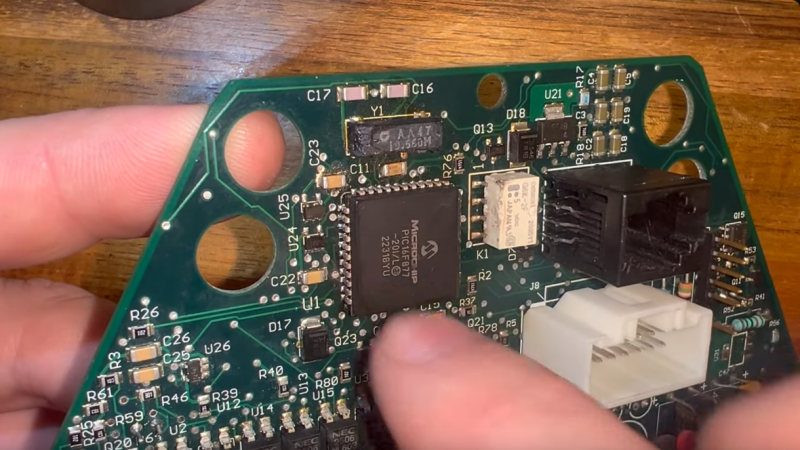With all the EV hype in the air, you’d be forgiven for thinking electric vehicles are something new. But of course, EVs go way, way back, to the early 19th century by some reckonings. More recently but still pretty old-school were Ford’s Think line of NEVs, or neighborhood electric vehicles. These were commercially available in the early 2000s, and something like 7,200 of the slightly souped-up golf carts made it into retirement communities and gated neighborhoods.
But as Think aficionado [Hagan Walker] relates, the Achille’s heel of these quirky EVs was its instrument cluster, which had a nasty habit of going bad and taking the whole vehicle down with it, sometimes in flames. So he undertook the effort of completely reverse engineering the original cluster, with the goal of building a plug-in replacement.
The reverse engineering effort itself is pretty interesting, and worth a watch. The microcontroller seems to be the primary point of failure on the cluster, probably getting fried by some stray transients. Luckily, the microcontroller is still available, and swapping it out is pretty easy thanks to chunky early-2000s SMD components. Programming the MCU, however, is a little tricky. [Hagan] extracted the code from a working cluster and created a hex file, making it easy to flash the new MCU. He has a bunch of other videos, too, covering everything from basic diagnostics to lithium battery swaps for the original golf cart batteries that powered the vehicle.
True, there weren’t many of these EVs made, and fewer still are on the road today. But they’re not without their charm, and keeping the ones that are still around from becoming lawn ornaments — or worse — seems like a noble effort.
















It is an excellent example of how reverse engineering and documentation is important for automotive repair. Unfortunately this is becoming a losing prospect with most EVs and new combustion engine vehicles.
Laws like the DMCA, and similar are allowing manufacturers to lock software and firmware down. Sometimes claiming public safety as the excuse to do so. While ignoring the real motivation. To lock the customer into official service depots, or buying a new car.
Indeed what this guys doing is absolutely disgusting, now it’s reverse engineered any weirdo will be able to upload their own hacked version to granny’s Think and if you want to know how that’ll end just remember what the Gremlins did to granny’s stair lift!
Just say no, it’s for your and your dearest’s safety (honest)
This advertisement was paid for by Ford Inc.
I think EV’s are going to make this simpler, not harder – it’s quite involved getting a modern ICE engine (& transmission) to run properly without the factory ECU and/or a ton of very careful tuning, almost impossibly so if you want to pass emissions tests and don’t have the resources to run engines on test dynos and the like.
An EV basically just needs 3-phase power delivered to the motor and you’re driving – and motor controllers and BMS are a fairly well solved problem already with aftermarket versions available. And the powers that be can’t point to noise / emissions as a reason to stop you.
I think you mean early 20th century. Napoleon never drove an electric car.
1828 according to:
https://www.energy.gov/timeline-history-electric-car
Think their claim is valid. Certainly many examples long before the start of the 20th C